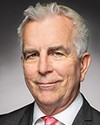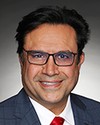That's an excellent question. Thank you.
I'd like to suggest that we should just be focusing on getting them involved in local sport and physical activity opportunities.
We actually worked in partnership with the federal government in 2015-16, when a large number of Syrian refugee families came to Canada, and recently with the influx of Afghan families over a year ago now. Throughout those experiences, we developed, in collaboration with many of our partners at the local level, a best practice for how to engage with newcomer families—I do want to insist that it's families, not just the kids—so that we create the right types of environments and trauma-informed approaches to coaching and youth leadership. This allows those kids to find a home and become familiarized with their new communities in a way that leads to long-term participation and potentially to those families building roots in those communities over the long term as well.
We have newcomer programs in Edmonton and Winnipeg and Surrey, B.C., and throughout Atlantic Canada and all points in between, and they are thriving. These kids are now integrating into more traditional forms of organized sport. There are many programs, as I mentioned earlier, on the periphery of organized sport that focus on the new Canadian experience and on giving them the competency and skills to then transfer over into more typical local clubs like hockey, soccer or basketball.
What it comes down to, I would argue, is continuing to invest, as the government has, in the Community Sport for All initiative. That is the first time we are seeing a significant influx of financial resources into the very grassroots of sport where these things matter and where the experts know how to address the needs of those kids and those families.





